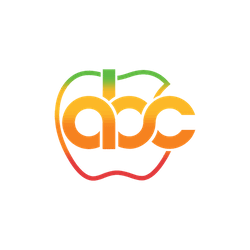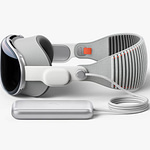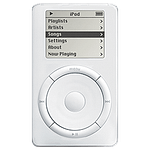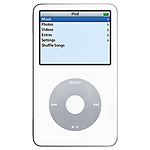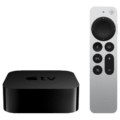- All Apple Devices
- iPod
- Apple iPod Nano 1st Generation
Apple iPod Nano 1st Generation
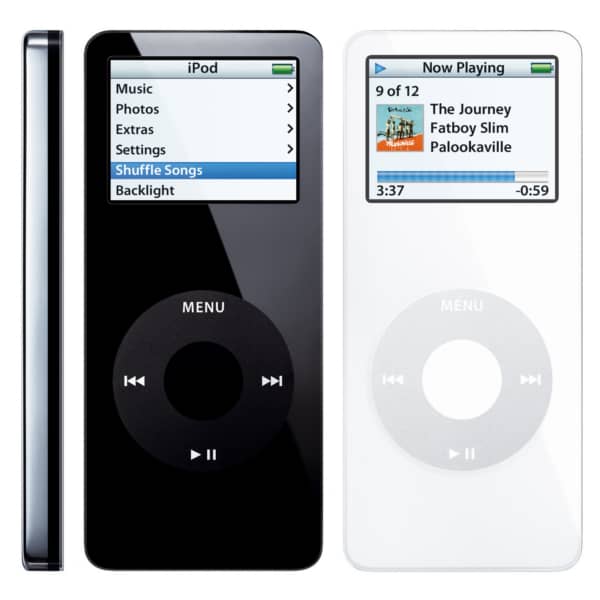
iPod Nano 1st Generation
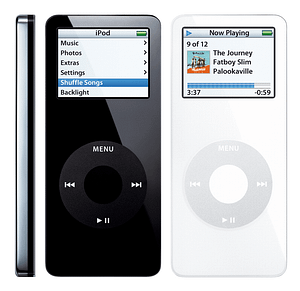
Product Brand: Apple
2
Pros
- Small and lightweight design, perfect for on-the-go use.
- Easy to navigate and use, with a simple click wheel interface.
- Large storage capacity for its time, with options for 1GB or 2GB models.
- Bright and colourful screen display for viewing photos and videos.
- Long battery life, with up to 14 hours of audio playback.
- Comes with earbuds and a USB cable for easy charging and syncing with a computer.
Cons
- No support for video playback, unlike later models.
- Limited color options, with only black or white available.
- No built-in speaker, so audio playback requires headphones or external speakers.
- Limited compatibility with newer software and technology, as it was released in 2005.
Apple iPod Nano 1st Generation Review and Features
The iPod Nano (stylised and marketed as iPod nano) is a discontinued portable media player designed and formerly marketed by Apple Inc.
The first generation model was introduced on September 7, 2005, as a replacement for the iPod Mini, using flash memory for storage. After its introduction, iPod Nano went through several differing models or generations. Apple discontinued the iPod Nano on July 27, 2017.
On September 7, 2005, Apple introduced the iPod Nano at a media event, with Steve Jobs pointing to the small watch pocket in his jeans and asking, “Ever wonder what this pocket is for?”
Advertising emphasized the iPod Nano’s small size: 40 millimetres (1.6 in) wide, 90 millimetres (3.5 in) long, 6.9 millimetres (0.27 in) thick and weighing 42 grams (1.5 oz). The stated battery life was up to 14 hours, while the screen was 176×132 pixels, 38 millimetres (1.5 in) diagonal, displaying 65,536 colours (16-bit colour).
1, 2, and 4 GB capacities were available. On November 11, 2011, Apple announced a recall of this iPod nano model due to a battery overheating issue. This recall applied to iPod Nanos sold between September 2005 and December 2006.
Full Technical Specifications
General Technical Specifications
| Device Type | Portable Media Player |
| Models |
MA350LL/A (1GB white) MA352LL/A (1GB black) MA004LL/A (2GB white) MA099LL/A (2GB black) MA005LL/A (4GB white) MA107LL/A (4GB black) |
| Released | 07 September, 2007 |
| Status | Discontinued |
| Predecessor | iPod Mini |
| Successor | iPod Touch |
| Generation | 1st |
| Colors | iBook white, Jet black. |
| System Requirements |
Mac system requirements Macintosh computer with USB port (USB 2.0 recommended) Mac OS X v10.3.4 or later Windows system requirements PC with USB port or card (USB 2.0 recommended) Windows 2000 with Service Pack 4 or later, or Windows XP Home or Professional with Service Pack 2 or later |
| Customizable Settings |
Customize main menu Create multiple On-the-Go playlists Adjust audiobook playback speed Clicker playback through headphones Rate songs Shuffle songs or albums Repeat one or all Sound Check on or off 20 Equalizer settings Backlight timer Alarms on, off or silent Sleep timer Date and time Display time in menu bar Contacts sort and display by first or last names Clicker on or off Languages: Czech, Danish, Dutch, English, Finnish, French, German, Greek, Hungarian, Italian, Japanese, Korean, Norwegian, Polish, Portuguese, Russian, Simplified Chinese, Spanish, Swedish, Traditional Chinese and Turkish Additional language support for display of song, album and artist information: Bulgarian, Croatian, Romanian, Serbian, Slovak, Slovenian and Ukrainian |
| Input and Output |
Dock connector 3.5-mm stereo headphone jack |
| iPod's Processor Type | ARM 7TDMI CPU PP5021C |
| iPod's Processor Speed | 80 MHz (x2) |
| RAM | 32 MB |
| iPod's Internal Memory |
1GB, 2GB or 4GB flash drive Holds 240 to 1,000 songs in 128-Kbps AAC format Holds 15,000 to 25,000 iPod nano-viewable photos Stores data via USB flash drive |
| Connectivity | USB through Dock connector |
| Audio Technology Features |
Audio Skip-free playback Frequency response: 20Hz to 20,000Hz Audio formats supported: AAC (16 to 320 Kbps), Protected AAC (from iTunes Music Store), MP3 (16 to 320 Kbps), MP3 VBR, Audible (formats 2, 3 and 4), Apple Lossless, AIFF and WAV Upgradable firmware enables support for future audio formats Headphones Earbud-style headphones with 18-mm drivers using Neodymium transducer magnets Frequency response: 20Hz to 20,000Hz Impedance: 32 ohms |
| Headphone Type | 3.5mm Audio jack |
| Display Info |
1.5 inch (diagonal) liquid crystal display with blue-white LED backlight 176 x 132-pixel resolution, .168-mm dot pitch Support for display of multiple languages and characters simultaneously |
| Dimensions |
Height: 3.5 in Width: 1.6 in Depth: 0.27 in |
| Weight | 1.5 oz |
| Camera | No |
| SIM SIM (Subscriber Identity Module) is a small card that contains mobile network subscriber's account information. This allows the phone using the card to attach to a mobile network. The SIM card is most commonly associated with GSM and UMTS mobile networks. Moving a SIM card from one phone to another allows a subscriber to switch mobile phones without having to contact their mobile network carrier. SIM cards can also be used by a phone to store limited amounts of data, such as phone numbers and text messages. | No SIM |
| Battery |
Built-in rechargeable lithium-ion battery 400mAh Playtime: Up to 14 hours when fully charged(3) Photo slideshow with music viewing time: Up to 4 hours when fully charged Charging via USB or FireWire to computer system or power adapter (sold separately) Fast-charge time: about 1.5 hours (charges up to 80% of battery capacity) Full-charge time: about 3 hours |
| Navigation | A click wheel with pressure-sensitive buttons under it. |
Disclaimer Note
We can not guarantee that the information on this page is 101% correct.
